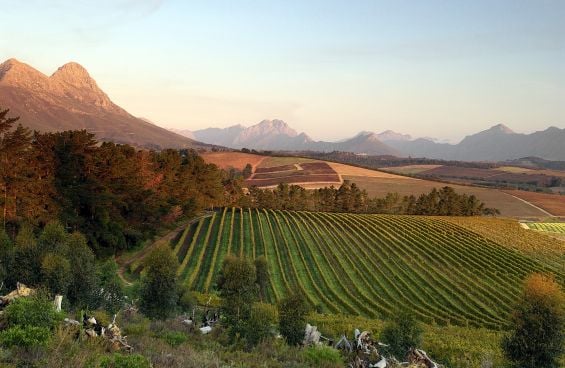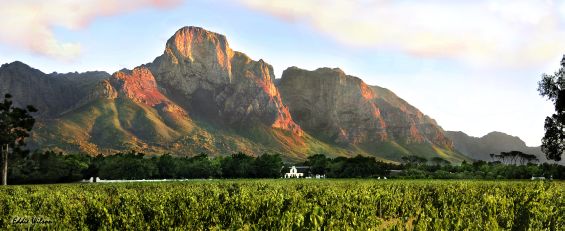South African wine has always held a place in my heart – while on holiday there, I had my first-ever tasting. Those were the days of swallow not spit…there was no assessment of the wines and I am not sure if I remember the whole tour, but they charmed me and still do to this day.
It was the Dutch who brought wine to South Africa back in 1659 when the first recorded bottles were produced. In the beginning, it was largely badly made and rustic, providing much-needed refreshment to the European population of the Cape – the exception being the wines of Klein Constantia, whose sweet, rich late-harvest stickies are still famous to this day. But the landscape of South African wine has changed dramatically. It has weathered the storms of boom and bust, overproduction, disease, apartheid and bad Pinotage to emerge as one of the most exciting and dynamic wine-producing countries today.
South Africa’s vineyard regions are spread across the country but are concentrated in the south-west of the country, under the cooling influence of the Atlantic Ocean. The soils here are old and weathered, ranging from Stellenbosch mountain sandstone to the granite hills of Darling. This ever-changing landscape allows many styles of wine to be made, from big, powerful reds to crisp, vibrant whites and everything in between. This land produces a style that is neither Old World nor New World, but a combination of the two.
The regions around Cape Town are the most visited and are seen as the epicentre of quality South African wine production. And while it’s true that the heartlands of Stellenbosch, Franschhoek and Paarl continue to produce excellent wines, including luscious Chenin Blancs and powerful Bordeaux blends, it is the lesser-known regions that are beginning to make people sit up and take note.

Stellenbosch is one of the finest areas for South African wine (Stellenbosch Wine Routes/Wines Of South Africa)
Elgin, traditionally an apple-growing region, lies just east of Cape Town. This is one of South Africa’s coolest regions; Riesling and Pinot Noir flourish here, while delicious cassis-laden Cabernet Sauvignon and spicy Shiraz are a nice contrast to the heavier wines of the classic regions. Further along the coast is Walker Bay, best known for its whale-watching tours; the cooling ocean breezes and shale soils produce crisp, mineral-driven wines. Zesty Sauvignon Blanc, with its notes of gooseberry, and berrylicious Pinotage are the varieties to look out for here.
For me, the area that holds the most excitement is Swartland. Translated as ‘the black land’, it is dry and arid but with cooling ocean breezes, and the grapes have to work hard, producing small, intense berries packed with flavour but still with balance. Eben Sadie, Chris Mullineux, Adi Badenhorst are just some of the exciting winemakers here; they have recognised the potential of this land and are creating wines that do not fit the classic South African mould.
Taking their lead from the Rhône Valley and southern France, there are plenty of interesting white and red blends appearing. The only threat to this fantastic region is the baffling decision last week to grant sand-mining licences in Swartland, which winemakers fear could limit vineyard expansion and hamper investment.
South Africa is the Rainbow nation. It is a land steeped in history but also one where old dogs and new young mavericks are challenging the preconceptions of this beautiful wine-producing country. If you like wine but have never tried a bottle from South Africa, you really are missing out…








 Enjoy responsibly
Enjoy responsibly